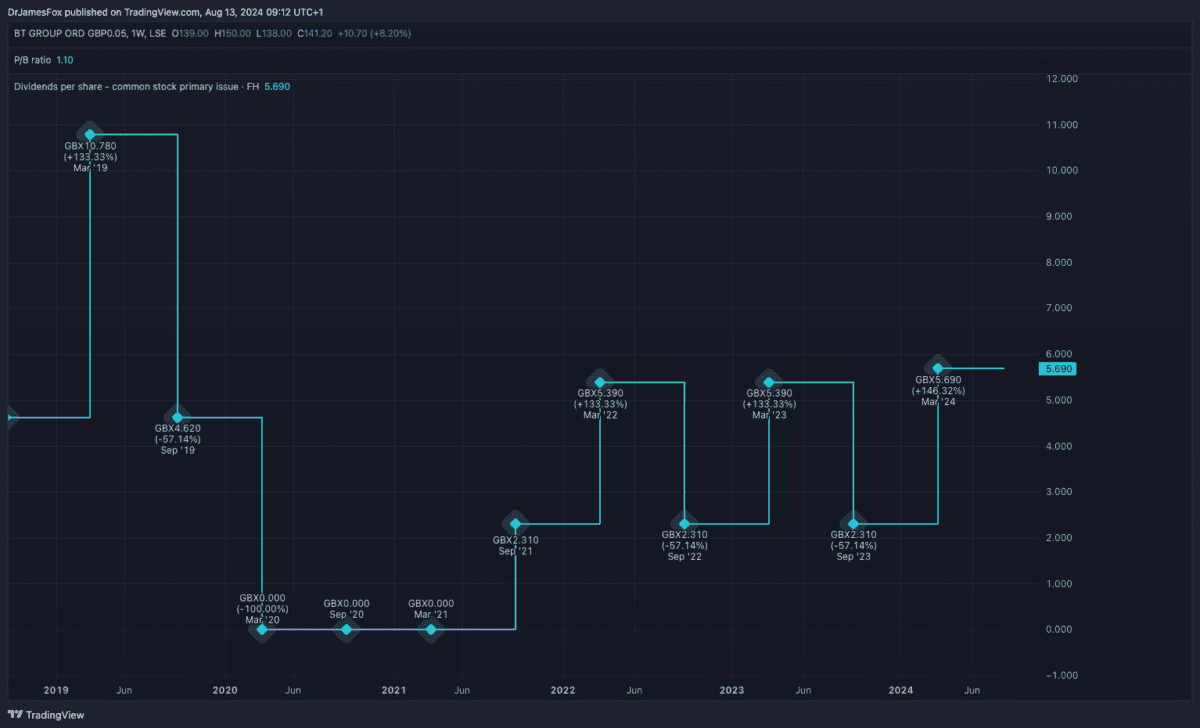Picture supply: Getty Pictures
The BT (LSE:BT.A) share value has risen 40% since I stated I used to be trying to purchase the inventory. I went on vacation and missed the primary tranche of progress.
The FTSE 100 inventory rose once more on 12 August after Bharti Enterprises purchased a 24.5% stake within the firm for round £3.2bn.
Bharti Enterprises — owned by Indian billionaire Sunil Bharti Mittal — purchased the stake of French billionaire Patrick Drahi.
Drahi, who first took a place in BT Group in 2021, had reportedly been trying to promote his stake with the intention to pay down among the debt collected by his telecoms firm Altice.
And this hypothesis that he ‘needed out’ solely served to maintain the share value low. In order Drahi exited the corporate, the inventory surged 7.5%.
Nonetheless vastly undervalued, analysts say
Based on analysts, BT Group inventory’s nonetheless vastly undervalued, even at 140p. The typical goal value is at present 194.5p, suggesting the inventory’s at present undervalued by as a lot as 37.4%.
Within the final three months, 9 analysts have given the inventory a Purchase score, 5 analysts have an Outperform score, two a Maintain, one a Promote and one an Underperform. As such, the consensus is fairly sturdy.
As highlighted by the beneath chart, the common value goal has jumped in 2024.

Worth lure or worth for cash?
In fact, analysts will be approach off with their forecasts, and that’s why we have to undertake our personal analysis.
Lately, the inventory’s change into one thing of a worth lure. The share value has fallen, the enterprise has suffered, and the dividend has dropped. Collectively, these elements have negatively impacted investor sentiment.

Nevertheless, there’s renewed power at BT Group. And this will partly be attributed to the plans lately laid out by new CEO Allison Kirkby.
Kirkby’s promised £3bn of financial savings yearly via to the tip of the last decade. And that is vital as a result of the corporate’s revenues stay very constant.
Because the desk beneath exhibits, the forecast signifies that revenues will stay largely flat whereas the online margin — a key indicator of profitability — improves all through the medium time period.
| Monetary yr (ending March) | Annual income | Internet Margin |
| FY27 (forecast) | £21bn | 8.2% |
| FY26 (forecast) | £20.9bn | 7.6% |
| FY25 (forecast) | £20.8bn | 6.9% |
| FY24 | £20.6bn | 4.1% |
| FY23 | £20.7bn | 9.2% |
| FY22 | £20.8bn | 6.1% |
In fact, there are nonetheless dangers going through BT Group. One is debt. With a internet debt place simply shy of £20bn, the corporate stays weak to near-term shocks. Furthermore, a sustained greater rate of interest might eat into medium-term earnings.
It’s additionally value recognising that BT’s rollout of fibre-to-the-premises (FTTP) is nowhere close to completed. Sure, we could also be previous peak Capex, however the firm’s aiming to achieve round 10m extra properties.
The underside line
Personally, I nonetheless consider BT inventory appears engaging with medium-term value financial savings more likely to make the enterprise rather more worthwhile. That’s why I’m persevering with to have a look at including this inventory to my portfolio.
I additionally suppose the current share purchases by Bharti Enterprises and Mexican billionaire Carlos Slim are a very good signal. These telecoms giants in all probability know a very good deal after they see one.





